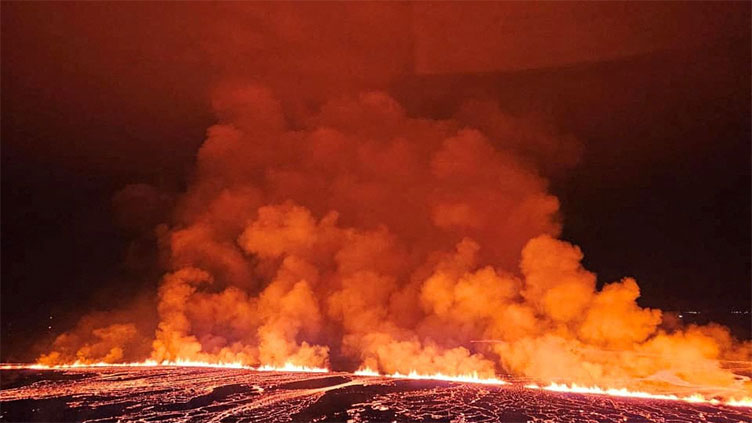Iceland lava flows slow after fourth eruption since December

World
The eruption - the fourth since December - sending fountains of molten rock.
REYKJAVÍK (Reuters) - Lava flows from a volcano in southwest Iceland that had lit up the night sky on Saturday (Mar 16) appeared to slow on Sunday, but authorities said they still posed a danger to infrastructure including a nearby fishing town.
The eruption - the fourth since December - began at 8.23pm GMT (Sunday, 4.23am, Singapore time) on Saturday, sending fountains of molten rock soaring from a roughly 3km-long fissure, roughly the same size and at the same place as the last eruption in February.
Authorities had warned for weeks that an eruption was imminent on the Reykjanes peninsula, just south of Iceland's capital Reykjavik, as magma had been accumulating underground.
"Seismic activity has decreased since the eruption began," Palmi Erlendsson, natural hazard expert at the Icelandic Meteorological Office (IMO), told public broadcaster RUV on Sunday.
A livestream video early on Sunday showed lava flowing just a few hundred metres from Grindavik, a fishing town of some 4,000 residents, that was evacuated during an eruption in November.
The barriers that authorities had erected around the town appeared to have redirected flows away from key infrastructure, IMO expert Einar Hjörleifsson told RUV.
Authorities were also monitoring lava flowing towards the peninsula's Svartsengi geothermal power plant, Hjörleifsson said.
A few residents who had returned to their homes in Grindavik since the last eruption in February were evacuated on Saturday, RUV reported.
Keflavik Airport and regional airports in Iceland were not impacted and remained fully operational, airport operator Isavia's website showed on Sunday.
The nearby Blue Lagoon geothermal spa, one of Iceland's major tourist attractions, closed as it did during previous eruptions.
The February eruption cut off heating to more than 20,000 people as lava flows destroyed roads and pipelines.


